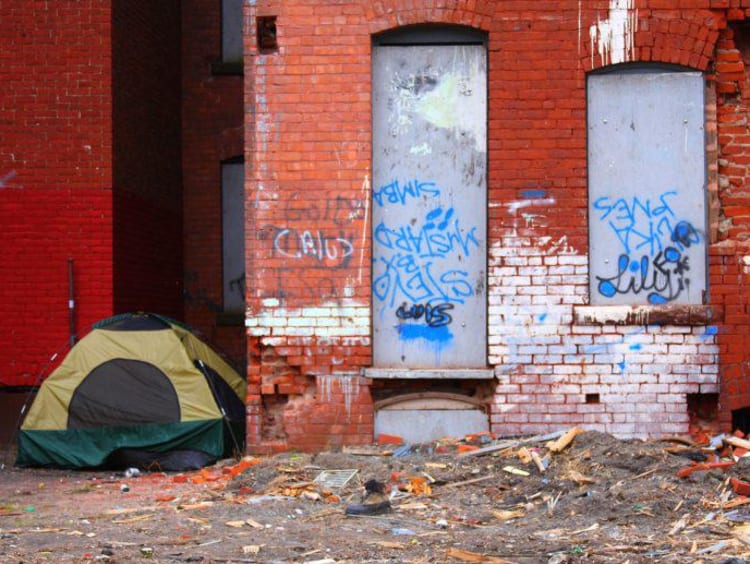Exploring Issues in Poverty

In March 1968, two events occurred that emphasized the need for equality in education to disrupt the cycle of poverty and create social mobility for all students: first, The East Los Angeles Blowouts which called for equality for Latinos in East LA high schools; second, Martin Luther King’s speech “The Other America,” where poverty and miseducation were linked.
Today, overcoming inequity in education includes minorities and other groups. Students defined by certain demographics are labeled a part of “the achievement gap,” including lower socioeconomic statuses and those who have certain disabilities.
Educators can work towards equality daily by emphasizing the student’s role in education.
Critical Thinking
Utilize critical thinking activities for students show their voice and realize tolerance and empathy.
- Use divergent questioning strategies to emphasize authentic voice.
- Create activities that emphasize problem-solving techniques including innovation.
- Include non-cognitive skills like resilience and aspiration in lesson-planning.
Tools of Production
Students cannot produce evidence of learning without the basic tools of production.
- Democratize technological reliance by creating activities available on all devices.
- Encourage students to bring in extra supplies for themselves and for others.
- Ask former students to contribute pencils and paper so that current students have equitable tools of production.
Learning Materials
Having a smartphone does not create learning. Refocus on what can be used to truly affect learning.
- Identify what the student needs to be successful and increase a focus on that, even if it means not requiring access to a textbook or the internet.
- Increase a culture of literacy by connecting students more purposely to books via libraries, inexpensive books from thrift shops and yard sales or donations from the community.
- Do not rely on provided curriculum alone. Create unique artifacts for learning indicative of the skills and knowledge emphasized in the classroom.
Expectations
Focus on what the students say they can do rather than telling them what they cannot do.
- Emphasize classroom goals like improvement, compassion, and reflection by creating activities that focus on those thought-processes.
- Connect student behaviors with their actions and ways of thinking. Open modes of communication will indicate the importance of honesty.
- Utilize data as topics of discussion with students on multiple levels (emphasizing the individual) so students know exactly how they fit into school achievement goals.
Achievement
Help students understand the difference between achievement and mastery.
- Create a mentality so that achievement is seen as an outcome of student choice.
- Connect student production with published modes of assessment to minimize perceived bias.
- Utilize autonomy, inquiry-based learning and heutagogy, or self-determined learning, allowing students to choose how they learn.
In 1848, Horace Mann stated, “Education then, beyond all other devices of human origin, is the great equalizer of the conditions of men. . .” Breaking the vicious cycle of poverty and creating social mobility is the objective of education and the mission of all teachers every day; therefore, on the 50th anniversary of the Blowouts and Dr. King’s “The Other America” speech, educators would be wise to remind themselves of their righteous role in American Society.
Grand Canyon University’s College of Education offers a variety of online degree programs to help educators take the next step in their career by advancing their education. Learn more by visiting our website or clicking the Request More Information button on this page.
References:
- “The Other America.” King, M.L. (1968). Grosse Pointe Historical Society. Retrieved from: gphistorical.org/mlk/mlkspeech/
- “Twelfth Annual Report of the Board of Education, together with the Twelfth Annual Report of the Secretary of the Board.” (1848). Massachusetts Board of Education.
- “East L.A. blowouts: Walking out for justice in the classroom.” Simpson, K. (2012). Departures. Retrieved from: kcet.org/shows/departures/east-la-blowouts-walking-out-for-justice-in-the-classrooms
- “Race, class, and Americans’ perspectives of achievement gaps.” Valant, J. and Newark, D. (2017). Brown Center Chalkboard. Retrieved from: brookings.edu/blog/brown-center-chalkboard/2017/01/16/race-class-and-americans-perspectives-of-achievement-gaps/
More About Patrick:
Pat Zuniga started teaching 2000. He has earned two advanced degrees in education, a MAT (GCU, 2004) and MSE (KU, 2017). Zuniga worked for 10 years at Prosser High School, where he helped the school earn the rank Silver Medal High School from US News & World Report. He currently works at Isaac Stevens Middle School in Pasco, Washington. He also coaches football for the Richland High School Bombers and owns My Mind My Power Educational Consulting. In 2014, alcoholism nearly cost him his life. He credits his recovery and sobriety to faith, family and friends.
The views and opinions expressed in this article are those of the author’s and do not necessarily reflect the official policy or position of Grand Canyon University. Any sources cited were accurate as of the publish date.


